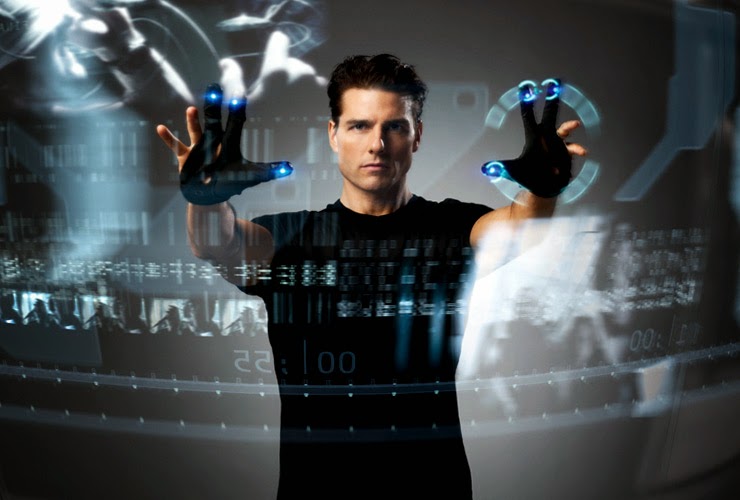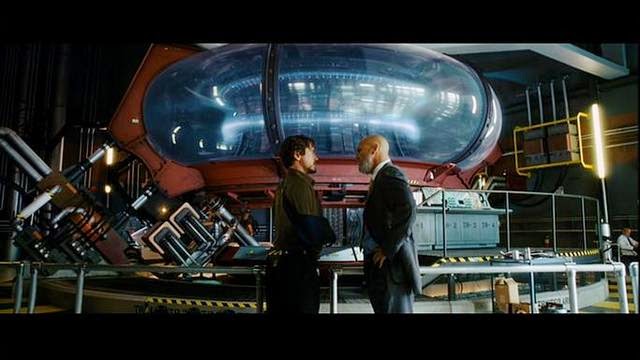You probably don’t know the name John Underkoffler, but you definitely know his work. Remember when you watched Minority Report, and saw Tom Cruise use his hands to navigate a virtual computer interface? That was Underkoffler. How about when you saw the opening credits of Hulk and saw David Banner gathering DNA from starfish and lizards to experiment on himself? That was Underkoffler. And how about the famous ARC reactor in Iron Man, the generator that powered his armor and exploded in the climax? All Underkoffler.
Underkoffler is what’s known as a “technologist,” a vague term that really means he works on technology in the real and movie world. He worked behind the scenes to come up with ideas for scientific concepts in many movies, including Iron Man, Ang Lee’s Hulk, and Minority Report. Underkoffler gave some fascinating insight into how he conceived of the scientific underpinnings of the three movies.
1. Hulk (2003)
Whether you love or hate this movie, you have to admit that it made the Hulk’s origin far more complex than ever before. The original comic’s origin of Bruce Banner being hit by gamma rays from a bomb was turned into a metaphor. In its place, the Hulk became the end result of a fusion of genetic engineering, human experimentation, radiation poisoning, and nanotechnology. Here’s how Underkoffler came up with it, as described in Engadget.
In Hulk, Ang Lee realized that all of the characters were scientists and that was the storyline, so it was about proposing plausible mechanisms by which the Hulk might actually work in a real world. If science and technology are going to be a part of the story, someone like me comes in right at the beginning as the script is taking shape. Working on Hulk, for instance, there was a lot at the script level that needed context and had to be figured out. The main thing that Ang [Lee] was interested in was the history — what series of experiments or mishaps actually gave rise to the Hulk? That process took six months until we figured out how all the pieces would fit together. What we ended up with is a kind of Frankenstein story, which is completely laid out in the opening credits.
2. Iron Man (2008)
It’s hard to imagine the movie Iron Man without the ARC reactor. I mean, the brilliant invention is what powers his company and his home. It’s what powers Tony Stark’s heart implant and allows him to escape from captivity. It’s what ultimately frames the massive final battle between Iron Man and Ironmonger. That’s why I was surprised to find out it wasn’t in the original script. Here’s how Underkoffler came up with it, courtesy of Engadget.
In Iron Man, the very first one for instance, there was a need for a giant, dangerous thing for the final fight scene. And presumably, whatever it would be, needed to explode and cause massive havoc and be the punctuation mark at the end of the story. When I was looking around, I thought you know, Tony [Stark] is interested in energy, obviously; he’s got this thing on his chest that’s not an infinite energy source, but it’s really important to power his suit. So I said, let’s take a look at the tokamak, a ring-shaped fusion-containment device that originated in the former Soviet Union, but it’s now a focal area as an energy source for nuclear fusion. It’s resonant; it’s Toroidal [a doughnut-shaped object] just like the thing on Tony’s chest. So, of course, he would have a giant tokamak fusion reactor at Stark Industries. In a way, that illustrates how you’re looking at all the properties of some real-world technology — the color, the shape, what it sounds like, what’s the scale, how do you connect to it — when enough of those elements belong in a story, you know you have a very important piece.
Minority Report (2002)
In Minority Report, Tom Cruise played a cop who works with psychics to arrest criminals before they ever commit a crime. One of the most striking and influential scenes is when Cruise uses a gesture-based system to manipulate images on a computer display. His interface has carried off into other movies and TV shows, including Iron Man. Here’s how Underkoffler developed it, courtesy of Movieweb.
We were all sitting around thinking, ‘Well, it can’t be that the whole mouse and Windows thing is as good as it ever gets?’ How do you get more of human expression through these machines so we can really get stuff done? I had built a series of systems called the Luminous Room. I was just finishing up a bunch of projects when Alex first visited the lab, actually it was Alex and Jerry Moss, the prop master on Minority Report. They were just generally looking around, trying to figure out what pieces of emerging technology could possibly fit in the film, what they could import, essentially. We really hit it off and I think that the some of the notions of alternate interfaces resonated with him, because Steven had said, ‘I don’t want to see any keyboards.’ He also said no voice technology, which is great. I loved that he really wanted to try something new. I think that Alex thought that the Luminous Room fit with Spielberg’s mandate, so he got me to come aboard and we refined the idea, simplified it. What had actually worked, in an academic setting, was now imported into a film and clarified in the process of preparing for the film.
The sad thing is that Underkoffler isn’t working on movies any more. But the exciting thing is that he’s working on bringing Minority Report‘s technology into the real world. He’s currently working at Oblong Industries, developing new user interfaces that use gestures and real-world objects to manipulate data.
What do you think of his technology? Which was your favorite? Would you use Oblong’s interfaces?
If you enjoyed this, then please use the buttons below to tell your friends about this post! Follow us! Email | RSS | Twitter | Facebook





<span class="dsq-postid" data-dsqidentifier="33084 ">3 Comments
Minority Report's technology into the real world is rather scary. Hopefully just the computer aspects and not the predicting who will be a killer part.
The Minority Report thing would be a lot better than a clunky old mouse.
What do you think he is, some kind of Jedi?